Beth Kephart's Blog, page 73
August 31, 2014
Writing is a kind of sickness: History of the Rain/Niall Williams: Reflections
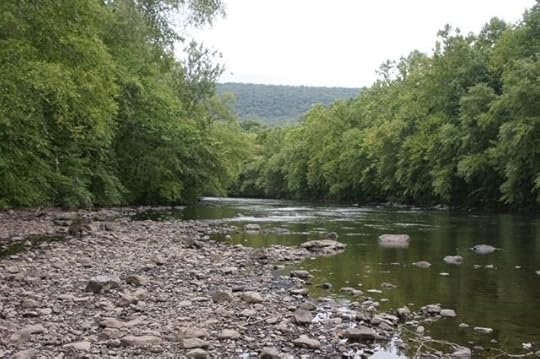 I bought History of the Rain because Melissa Firman said I should, and because I trust this fine reader/writer/reviewer.
I bought History of the Rain because Melissa Firman said I should, and because I trust this fine reader/writer/reviewer. I read it because it is glorious. Irish and tangled and and caught, at times, in its own whirl, its own strange uncharted loveliness. It is a story about failure that is, itself, a victory of style, foresight, love. A book of tangents and a-chronology, of curves and mist. A book that, on its final page, does not, will not end.
Ruth Swain lives by a river in a part of the world where it always rains, where family is good, where the absence of a brother and a father requires Ruth herself, sick and perhaps dying, to write her family's wobbling story down. Into that story she writes the stories of the books her father loved and endowed to her, the mythology and the hope, the fortitude and the flood.
Look at what Niall Williams does with a character:
Two-handed, Mrs Quinty lifts the glasses free of the minor parsnip of her nose, holds them just in front of her and scrutinises the dust gathered there. Rain makes bars of light and dark down her face and mine, as if we're inside the jail of it.Look at what he does with landscape:
The fields are wrapped in soft grey tissues of weather.Look what he does with memory:
I know that field. Years ago I went there. It's rough and wildly sloping, hoof-pocked and rushy-bearded both. Running down it is bump and splash, is ankle-twist treachery. You get going and you can't stop. You're heading for the river. And you can't help but scream.And (knowingly, truthfully, achingly absolutely), look what he does with the truth:
Writing of course is a kind of sickness. Well people don't do it. Art is basically impossible. Edna O'Brien said she was surprised Van Gogh only cut off one ear. Robert Lowell said that he felt was a blazing out, flashes, nerve jabs in the moments when the poem was coming. I myself have had no blazing out, and don't suppose it's all that good for your constitution. To stop himself from taking off into the air Ted Hughes had to keep repeating over and over Beneath my feet is the earth, some part of the surface of the earth. The thing is, writing is a sickness only cured by writing. That's the impossible part.More than 350 pages, and every page this good.




Published on August 31, 2014 12:52
Hamburg-ers and Philadelphia Sidewalks
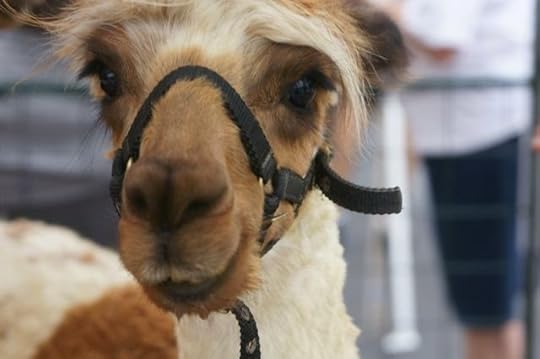
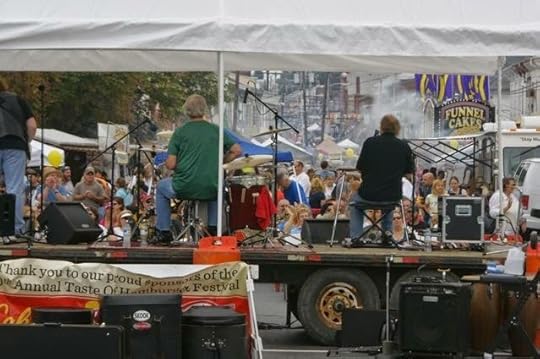
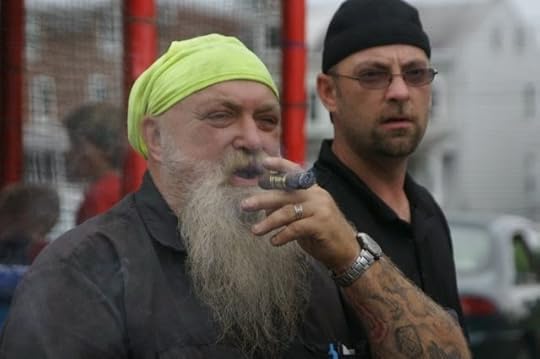
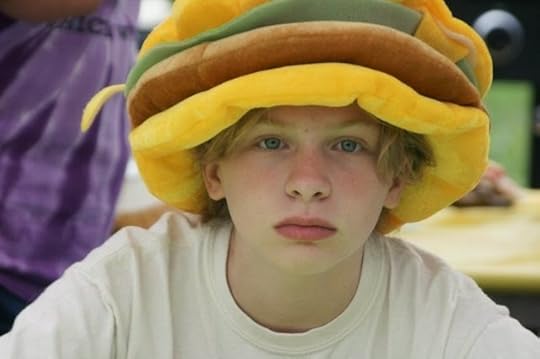 Yesterday we went off in search of a river trail—an end of summer drive through corn country—and discovered a hamburger festival in (but of course) the town of Hamburg. One of those sweet surprises that puts an exclamation mark against the word adventure. I'd been anticipating a sleepy, overcast river walk. But when we arrived, I found the Supreme Woodstock of beefy festivals instead. Dozens upon dozens of hamburger chefs out on the street alongside musicians and leashed pigs and roller derby queens, the crafts people and the wood carvers, the hat wearers and the cigar smokers, the people having a beautiful time. It was as if I'd gone on a one-day European vacation. It was an hour and a half drive and a whole other country. I loved it.
Yesterday we went off in search of a river trail—an end of summer drive through corn country—and discovered a hamburger festival in (but of course) the town of Hamburg. One of those sweet surprises that puts an exclamation mark against the word adventure. I'd been anticipating a sleepy, overcast river walk. But when we arrived, I found the Supreme Woodstock of beefy festivals instead. Dozens upon dozens of hamburger chefs out on the street alongside musicians and leashed pigs and roller derby queens, the crafts people and the wood carvers, the hat wearers and the cigar smokers, the people having a beautiful time. It was as if I'd gone on a one-day European vacation. It was an hour and a half drive and a whole other country. I loved it. 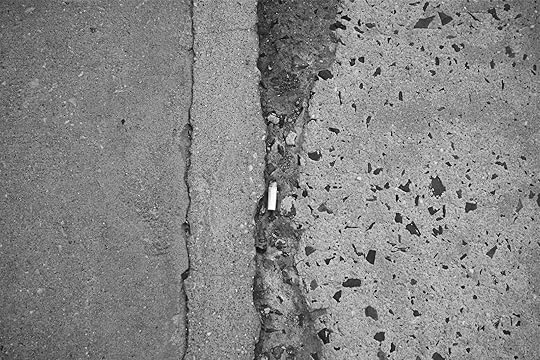
I love, too, my collaboration with Kevin Ferris of the Inquirer, who gives me room to write about the Philadelphia places or experiences that I hope will resonate with those who have meandered through or wondered about our city. Many months ago, while we were chatting, Kevin suggested that I study the sidewalks of the city and see what they might reveal. And so one day, I set out on a sidewalk walk, then wrote the story that begins like this:
From 30th Street Station I walk east on Market - cross one river in pursuit of another. I watch the world beneath me shift. Asphalt. Curb cut. Bridge. A ribbon of discontinuous sidewalks.
Way down deep, the planet's inner iron core radiates some 5,000 Celsius degrees. Here, on the Market Street sidewalks, solidity is an illusion. The concrete panes are cracking. The bricks are buckling. The rising angles of the slate and granite tiles suggest the ceaseless motions of the Earth's crust and the convective power of a restless mantle.
A planetary urging from below.
A streetscape pounding from above.and continues here.
The sidewalk like geology, I think.




Published on August 31, 2014 05:08
August 30, 2014
the very height of things, the end of summer
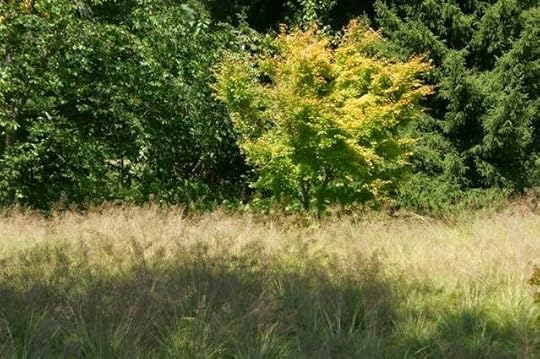
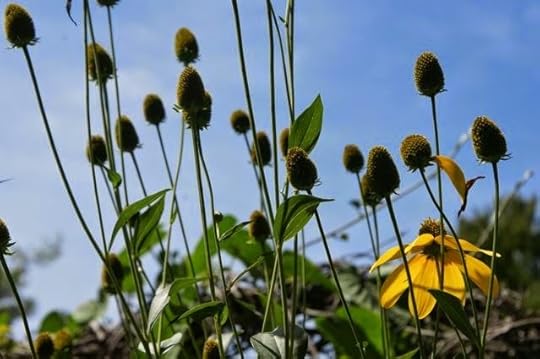

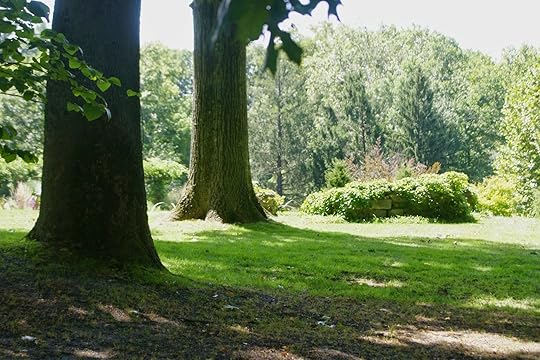 You know summer is ending when the flowers at Chanticleer are taller than you, when the pods are mostly empty, when the petals have mostly blown away, when the cardinal flowers light the bendy paths.
You know summer is ending when the flowers at Chanticleer are taller than you, when the pods are mostly empty, when the petals have mostly blown away, when the cardinal flowers light the bendy paths.You stand at the crest of the hill. You consider the months that are now tucked inside your history.
There's a breeze out there. A stirring.
Next week, or the week after, I will drive to the beach and stand on the shore and talk to the sea. Because the end of summer also means a little reckoning with the salt and the churn of the sea.




Published on August 30, 2014 06:33
August 29, 2014
giving thanks
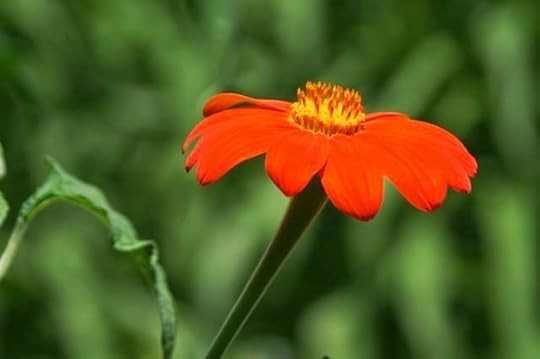 To John Warner, who writes Biblioracle, for listing Handling the Truth on his Recommendation list. I read Mr. Warner's smart books essay every week in Chicago Tribune's Printers Row Journal. I learn whenever I do:
To John Warner, who writes Biblioracle, for listing Handling the Truth on his Recommendation list. I read Mr. Warner's smart books essay every week in Chicago Tribune's Printers Row Journal. I learn whenever I do:The Biblioracle offers his recommendations
1. "The Goldfinch" by Donna Tartt
2. "Love and Shame and Love" by Peter Orner
3. "Handling the Truth" by Beth Kephart
4. "J.D. Salinger: The Escape Artist" by Thomas Beller
5. "Carsick" by John Waters
To the American Bookselling Association, for including Going Over in the 2014 Best Books for Children & Teens, Too. Honored to be there. Grateful to be listed alongside my friend, Amy King.




Published on August 29, 2014 13:47
In Chicago Tribune: Books with purpose demand urgent reading
 Earlier this summer the impeccable Bill Wolfe invited me to write a short piece for his beautiful blog, "Read her Like an Open Book" that focuses on the work of women writers (their methods, their work). I had been thinking a lot about books that matter and the clicking tock, about the world we're in and the role of writers. And so I wrote a quick piece on the topic that began an interesting conversation out there in the virtual world.
Earlier this summer the impeccable Bill Wolfe invited me to write a short piece for his beautiful blog, "Read her Like an Open Book" that focuses on the work of women writers (their methods, their work). I had been thinking a lot about books that matter and the clicking tock, about the world we're in and the role of writers. And so I wrote a quick piece on the topic that began an interesting conversation out there in the virtual world.A few weeks later urgency was still on my mind, and my dear friends at Chicago Tribune gave me room to expand on the thesis. This time I included books—both fiction and nonfiction—that have lately impressed me as significant.
That piece runs here today.




Published on August 29, 2014 03:22
August 28, 2014
WS studioarts: a gathering of my husband's art
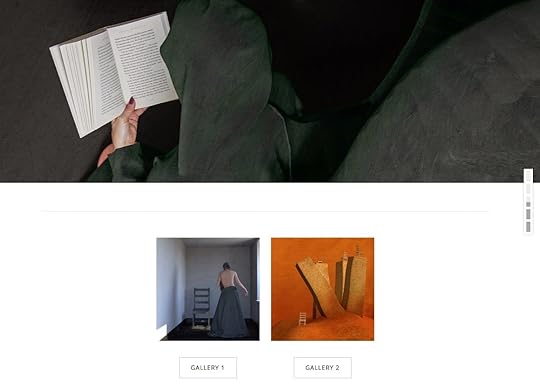 Ceramics. Photography. Graphic Arts.
Ceramics. Photography. Graphic Arts.This is the work my husband does.
This summer, Bill has brought all of that together in a single web site, which I have the privilege of launching here.
Some of our clients will recognize some of the images. Our pottery friends will recognize the pots. Our dancing friends will find themselves inside Bill's magical 3-D imagery. My niece will find herself in the image above, reading a book that is called Small Damages.
The site is like a gathering. I hope you'll take some time to explore it.
The link, again, is this.




Published on August 28, 2014 14:34
A Kephart is the first American to scale Mount Kilimanjaro
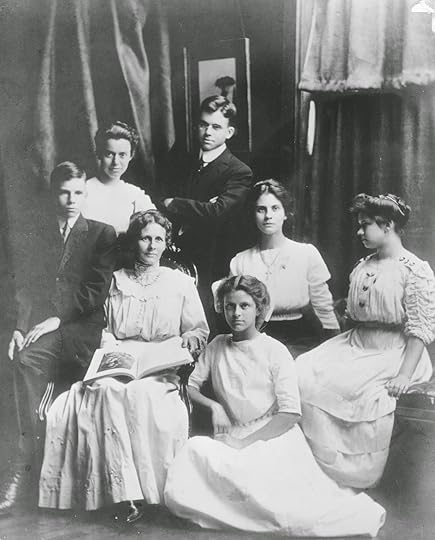
From my cousin Libby, earlier today, this bit of family history, posted on the Cornell University news site. I didn't know this. I probably should have. I find it especially interesting today, as I finish reading the new Matt Higgins book Bird Dreams: Adventures at the Extremes of Human Flight, a magnificent chronicling of the men (and women) who choose to jump from planes, buildings, antennae, and cliffs, some wearing nothing more than flying-squirrel-shaped suits.
What people will do. What they can do. And apparently Leonard Kephart, my grandfather's brother, chose to scale Africa's great mountain all in a hunt for new glasses, and clover.
Leonard (pictured standing with my grandfather and great aunts (and Laura Mack)) was one of his six children born to Horace Kephart, the librarian-turned-outdoorsman who helped found the Great Smoky Mountains National Park. I've written about Horace here. But just moments ago, I found this lovely biography on the Horace Kephart Alaska Center Weblog.Aug. 30, 1927 Leonard W. Kephart, Class of 1913, is the first American to scale Mount Kilimanjaro, Africa's highest peak. He was in Africa on a search for new grasses for the U.S. Department of Agriculture. Kephart took four days to reach the peak, slogging through snow-covered gravel the last day. The climb was not entirely without scientific reward, reported the Cornell Alumni News (Nov. 10, 1927). Kephart discovered three new varieties of clover on the expedition.
I learn so much from those who do history well.




Published on August 28, 2014 13:09
Throwback Thursday. I had a thing for hats.
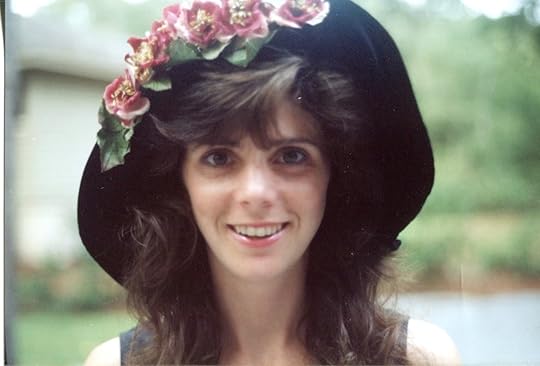 I still have that hat.I don't think, however, that I am still so deer-caught-in-the-headlights-ish.(I hope not; perhaps being not-headlightish is the sole advantage of advancing age.)
I still have that hat.I don't think, however, that I am still so deer-caught-in-the-headlights-ish.(I hope not; perhaps being not-headlightish is the sole advantage of advancing age.)



Published on August 28, 2014 05:29
August 27, 2014
Miranda Kephart, my niece, dazzles with a foxtrot (and turns 21)
My niece, Miranda Kephart, will soon turn 21. Having made her way to Yale with countless science credits and awards, Miranda soon emerged as a truly stellar ballroom dancer—learning the steps, and the artistry, at lightning speed. This foxtrot was filmed at Yale's 2014 Spring Show, and Miranda's old aunt (that would be me) watches it through teary eyes.
Happy Almost Birthday, Miranda.
And Happy Already Birthday, Owen. (Owen being Miranda's brother, who dazzled the Beth Blog World last year with this amazing Rubik's Cube performance and who is now settled in for his first year of college.)




Published on August 27, 2014 05:13
Elly P.: tween wonder
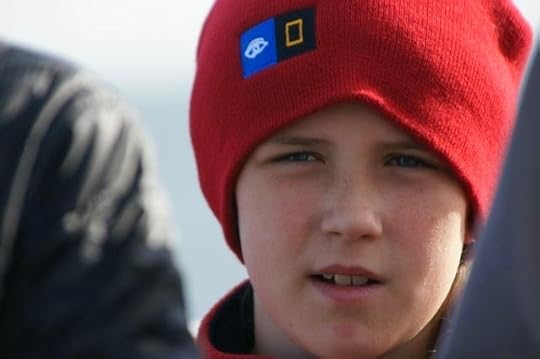
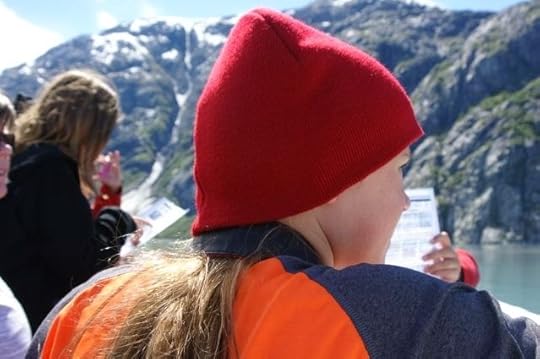
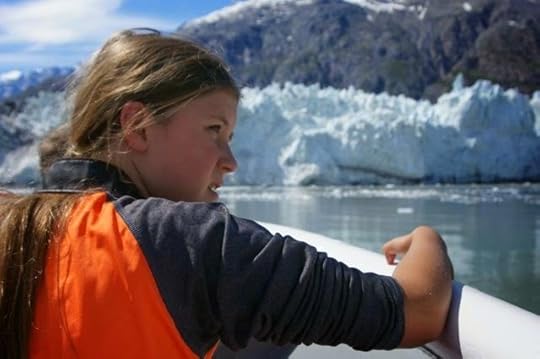
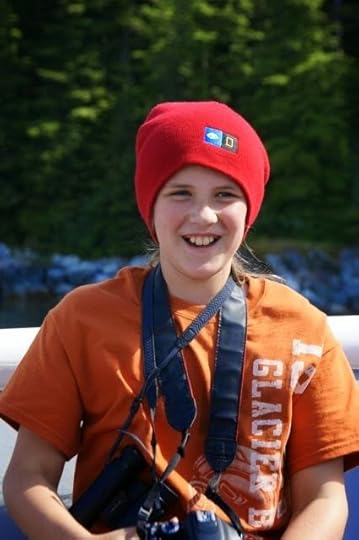
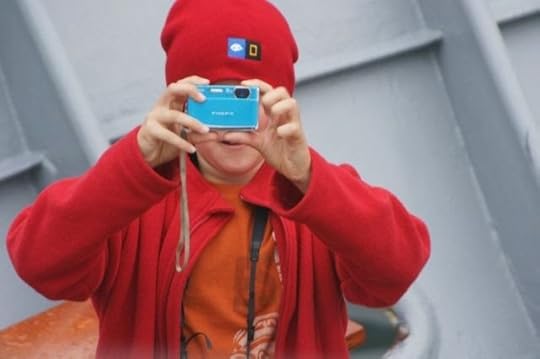
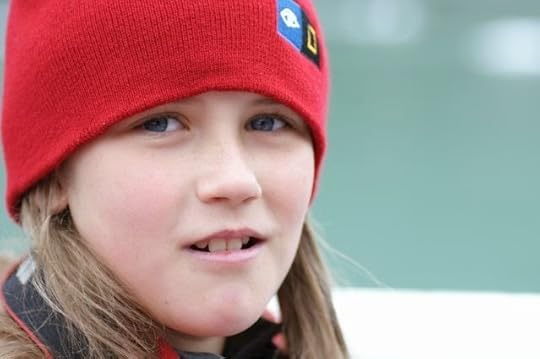
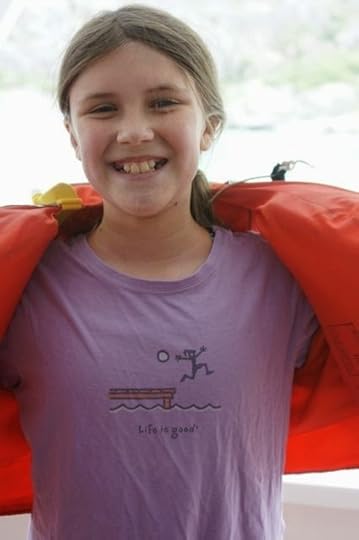
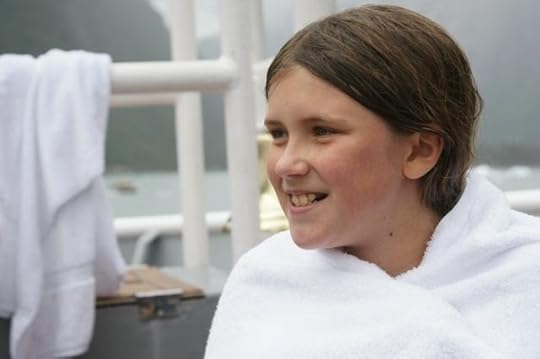 Yesterday, this:
Yesterday, this:A client sends a gift of blank notebooks in the wake of a job I gladly did (so many jobs, through so many years, I've done—but this gift, so unexpected). An author for whom I read and blurbed a debut novel sends a beautiful card and gift—wholly lovely thoughtfulness. The weather unfolded, magnificently. I wrote the first two pages of a book.
All of that was enough and then, end of day, an email from the impeccable Elly P. of Alaska-trip fame arrives. The world's top National Geo Junior Explorer who has a travel pedigree that outshines most, wears a camera around her neck like a pro, jumps into frigid bay water with nary a blink, and kept me company on a glorious boat with stories about herself and at least one fantastical story that she made up on the spot, while spreading Nutella across her breakfast toast.
Elly P. Elly P. All these weeks later, she writes to me.
Elly, you may have taken a bunch of photos of the crazy author lady with the untamed Alaska hair, but I've got pictures of you being your glorious intelligent, determined, clever, funny self. I've got these.
Magical camera. I'm in.




Published on August 27, 2014 04:27



